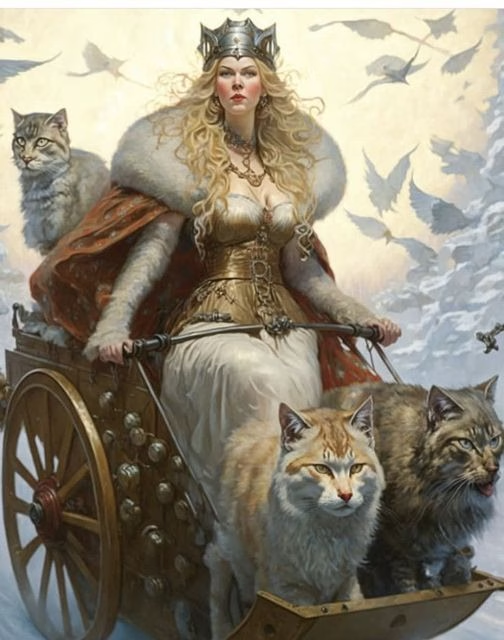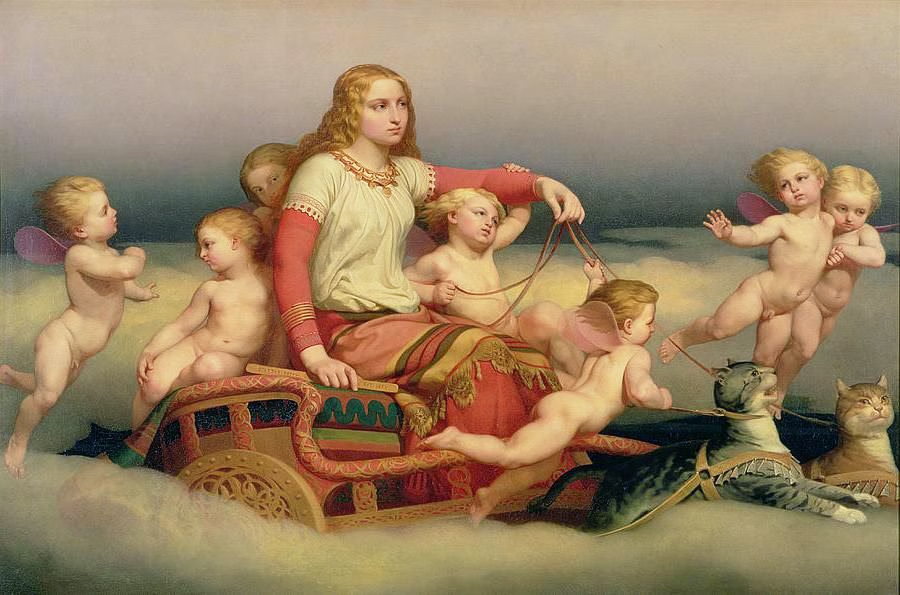Freyja is one of the most powerful and multifaceted figures in Norse mythology, known as the goddess of love, beauty, fertility, war, and death. One of her most captivating and mysterious symbols is a chariot pulled by cats. This unique detail beautifully reflects Freyja’s deep connection to nature and her complex role in the mythological world.
Freyja and Her Cats: Mythological Sources
The image of Freyja’s chariot being drawn by cats appears in some of the oldest Norse texts, most notably in the Prose Edda (circa 1220), written by Snorri Sturluson. The text describes the goddess riding a chariot pulled by two cats, although their names and specific characteristics are not detailed in the original manuscripts.

The Names and Symbolism of the Cats
Modern pagan authors and mythology enthusiasts have filled in this gap by giving the cats names. American writer Diana L. Paxson named them Bygul (“bee-gold”) and Trjegul (“tree-gold”), names that symbolize Freyja’s sacred ties to fertility and abundance. These names emphasize her intimate bond with nature and her revered sacred animals.
The Cats as a Gift from Thor
Some myths suggest that Freyja’s cats were gifts from the mighty god Thor. In certain Russian folk tales, Thor encounters a magical cat named Cat Bayun and her two offspring. The mother cat claims she must leave her kittens with Freyja, and Thor agrees to deliver them. These kittens eventually become the powerful cats that pull Freyja’s chariot.

The Symbolism Behind the Cat-Drawn Chariot
Cats have long been regarded as sacred and mysterious creatures in many cultures, including Ancient Egypt and Japan. In Norse mythology, Freyja’s chariot being pulled by cats highlights her harmonious relationship with nature and her multifaceted character that combines grace with strength. The chariot symbolizes the goddess’s divine power, fertility, and connection to the natural and supernatural world.
Freyja’s cat-drawn chariot is one of the most unique and meaningful symbols in Norse mythology. It reveals her deep bond with nature, her role as a goddess of fertility and war, and her sacred relationship with powerful animal companions. This image enriches our understanding of Freyja’s significance and adds a magical layer to Norse mythological traditions.
Cover Image: Freyja driving her cat-drawn carriage. Illustration by Ludwig Pietsch, from Murray, Alexander’s Manual of Mythology, 1874. Wikipedia





